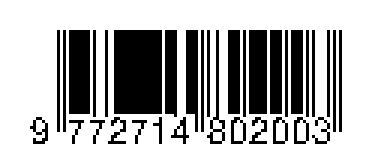EKSTRAKSI ANTOSIANIN DARI BIJI ALPUKAT SEBAGAI PEWARNA ALAMI
DOI:
https://doi.org/10.34151/technoscientia.v12i2.2471Keywords:
Avocado seeds, Extraction, Natural colorantAbstract
The needs for colorant is increasing, so the colorant produced by natural substances begin to be substituted for synthetic colorant as technology and knowledge develop. The substitution can reduce production cost, but the synthetic colorants have negative effects. The synthetic colorants can be dangerous to our health and environment if they are used for food colorants and textile industry. Therefore, natural substances such as avocado seeds are still needed for coloring which is eco-friendly by applying science and technological development.
This research aim to study the effect of extraction time and the ratio of solvent concentration to the concentration of anthocyanin extract and find good conditions in the anthocyanin color test process with the extraction time and the ratio of solvent concentration variable. This research has been carried out through 4 (four) stages: (i) extracting anthocyanin, (ii) separating the anthocyanin extract uses a solvent, (iii) coloring the fabric uses anthocyanin extract which is more concentrated, (iv) testing the anthocyanin colorant by washing it uses detergent.
Dissolved anthocyanin concentration analysis is carried out with a UV-Visible Spectrophotometer. This method is applied for discovering the quantity of anthocyanins dissolved in the detergent solution after washing the cloth that has been colored. The research indicate that the largest anthocyanin extract is 0.10002 mL anthocyanin /mL solvent when the extraction time is 150 minutes and the ratio of solvent concentration is 1:13.
References
Bechtold, T. dan Mussack, R., 2009, Handbook of Colorant, Willey, pp. 144-147.
Churniati, N. A., Chairul, S., Erwin, 2016, Uji Fitokimia dan Stabilitas Zat Warna dari Ekstrak Biji Alpukat dengan Metode Spektroskopi UV-Vis, Univer-sitas Mulawarman, Samarinda
Gross, J., 1987, Pigments in Fruits. London: Academic Press, p. 1-55.
Harborne, J. B., 1987, Metode Fitokimia: Penuntun Cara Modern Menganalisis Tumbuhan, Institut Teknologi Ban-dung.
Houghton, J. D. dan Henry G. A. F., 1995, Natural Food Colorants, Spring-er, pp. 53-59.
Kurniawati, F. dan Susanti, L.D. 2009, Pembuatan Zat Warna Alami Tekstil dari Biji Mahkota Dewa, Universitas Sebelas Maret Surakarta.
Monica, F., 2006, Pengaruh Pemberian Air Seduhan Serbuk Biji Alpukat (Persea Americana) Terhadap Kadar Glukosa Darah Tikus Wistar yang diberi beban Glukosa, Skripsi Universitas Diponegoro. Semarang.
Navas, M. J., Jimenez-Moreno, A.M., Bueno, J.M., Saez-Plaza, P., dan Asuero, A. G., 2012, Analysis and Antioxidant Capacity of Anthocyanin Pigment, Part IV: Extraction of Anthocyanin, Critical Reviews in Analytical Chemistry, 42:313-342.
Sudjadi, 1988, Metode Pemisahan, Yogyakarta: Kanisius.
Winarno, 2007, Dasar-dasar Pemisahan Analitik, Universitas Negeri Sema-rang.
Winarno, F. G., 1997, Kimia Pangan dan Gizi, Jakarta: Gramedia Pustaka Uta-ma.
Zakaria, Y. H. dan Kristianingrum, 2014, Peningkatan Kestabilan Zat Warna Klorofil Daun Katuk Menggunakan Hidrotalsit Sebagai Zat Warna Industri Tekstil, Program Studi Teknik Kimia UPN “Veteran” Yogyakarta.
Zuhrotun, A., 2007, Aktivitas Antidiabetes Ekstrak Etanol Biji Buah Alpukat Bentuk Bulat, Universitas Padjajaran, Bandung.
www.batikindonesia.info.com, diakses 01 Januari 2020.







